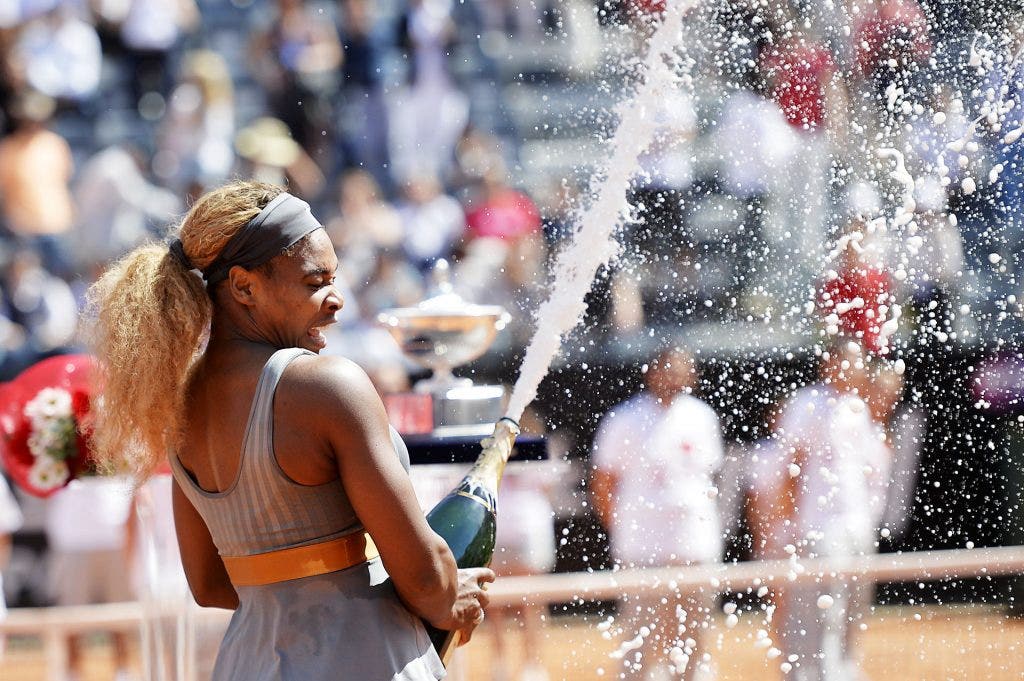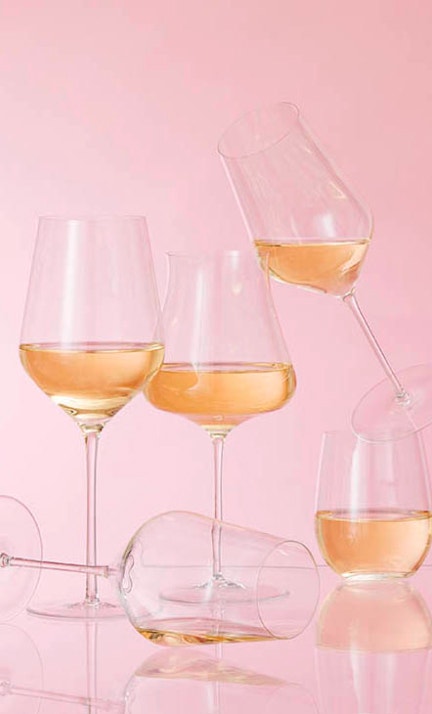How Formula 1 Made Spraying Champagne Iconic
Some of the most iconic celebrations in sports include Champagne—often lots of Champagne—but no sport does it quite like Formula 1.
The global racing series is currently experiencing a popularity surge in the U.S., drawing record ratings on ESPN and spawning the hit Netflix docuseries, Drive to Survive. New fans are quickly learning that bubbly is a major part of the show. The defining moment of each race is the uproarious podium celebration, where the top three drivers uncork sparkling wine and douse each other from head to toe. Some drivers even find unique ways of drinking it (like in a shoe).
But new American enthusiasts might also be wondering: When did these lavish celebrations become such an integral part of each race—and why?
The Beginning of Champagne in Formula 1
The tradition of Champagne at Formula 1 races dates all the way back to 1950 when Argentinian driver Juan Manuel Fangio received a large bottle of Moët & Chandon after winning the French Grand Prix. The practice soon became standard practice at all races.
“Today, we see other sports celebrating with bubbles, but it all started back then with Formula 1,” says Matteo Lunelli, the CEO of Italian wine brand Ferrari Trento, the sport’s current sponsor (which, despite its name, has no affiliation with the Scuderia Ferrari Formula 1 team). “That’s why it has remained such an iconic tradition in our sport and a big part of the Formula 1 show.”
The act of spraying Champagne, though, began at the 1966 24 Hours of Le Mans, the legendary French endurance race, when Swiss driver Jo Siffert accidentally popped the cork on his bottle, spraying a few unsuspecting spectators. The following year, American racer Dan Gurney, who had just won the race for Ford, decided to take Siffert’s move one step further: He shook up his bottle of Moët & Chandon and showered everyone around him, for better or worse.
“He sprayed it all over the fans, the photographers and all over their lenses. All over everything,” recalls Phil Henny, a Swiss mechanic who worked on Gurney’s team at Le Mans that year, in a recent interview with Wine Enthusiast.
“It was fun in the moment, but, unbelievably, he even sprayed Madame Ford,” Henny adds, referring to the wife of Gurney’s team owner, Henry Ford II. “She was dressed so nicely but now was covered in Champagne. Henry Ford did not look happy.”

Scoring the Sponsorship
Soon, the fun—and messy—tradition caught on. Champagne showers became a staple in motorsports, eventually becoming common practice in most major sports across the globe. In America, it’s most prominently seen during baseball and basketball playoff celebrations, but international sports including tennis, golf, polo and soccer also frequently incorporate it.
In Formula 1, the practice quickly evolved into the spectacle we see today, and official sponsorship opportunities emerged, with wine brands including Moët & Chandon, G.H. Mumm, and Carbon all sponsoring podium celebrations at various times since 1966.
According to Ishveen Jolly, the founder and CEO of OpenSponsorship, a company that brokers deals between brands and athletes, the Formula 1 sponsorship, in particular, is a coveted one for wineries.
“The beauty of Formula 1, from a brand perspective, is that every other week you get this moment,” Jolly says. “You [don’t] see NFL players downing Champagne every week after a win, right? And there’s a global following for Formula 1 that you don’t get with every other sport,” she adds, especially now that Formula 1 has cracked the U.S. market.
The numbers prove it to be true. Lunelli notes that Ferrari Trento—which has sponsored Formula 1’s podium celebrations since 2020—has experienced rapid growth in America, with sales rising in the U.S. by more than 50% in 2021. Throughout last season, approximately 60,000 bottles of Ferrari Trento were served to guests at races, with the Miami Grand Prix setting the record for most consumed. Lunelli expects those numbers to be even higher in 2023 and has high hopes for the debut Las Vegas Grand Prix scheduled for November
“We made a big jump last year in the U.S. and expect even more growth to come,” Lunelli says. “We were brave enough to start this partnership at the height of the pandemic when there were a lot of short-term question marks, but we were convinced that this would make a difference to our long-term success internationally.”

Beyond Formula 1
Formula 1’s ascendance in the U.S. comes at a time when athletes and sports leagues have been embracing wine like never before. According to Amanda McCrossin, a certified sommelier and wine personality, the NBA and NFL, in particular, have become much more enmeshed in wine culture in recent years.
“I worked at a restaurant in Napa Valley where we’d have tons of athletes—and very famous ones—walk in with a deep love of wine, sparkling wine and Champagne,” she says. “We’re now seeing NBA and even NFL players really embrace the industry and openly talk about their love of it.”
More sponsorship deals have followed: NBA stars including Dwyane Wade and C.J. McCollum have launched their own wine labels, while just last year the NFL named E. & J. Gallo Wineries its first-ever official wine sponsor.
For McCrossin, an increasing link between wine and sports can be an important step in helping the wine industry reach a new—and, crucially, younger—demographic. “When you look at how wine has been positioned, it’s really been pretty exclusionary,” she says. “So partnering with another brand or teaming up with an influencer—especially athletes—can be a great way to not only get more people involved but bring a different sector of wine drinkers in.”
Jolly notes that Formula 1’s recent success—and the pronounced growth of Ferrari Trento—could be instructive for other wineries as they look into new partnerships with sports leagues. In particular, she suggests that they consider how to work their brands into the sport in an organic way, which could produce memorable moments akin to the Formula 1 podium.
“The virality of those clips on social is key,” she says. “A younger viewer may not sit down to watch a three-hour sporting event, but they’ll consume certain moments and fun things. Sports really lends itself to this very well.”
As for Henny, he’s amazed to see how far these Champagne celebrations have come ever since he watched Gurney start the tradition half a century ago. But he is quick to note that he finds the whole pomp and circumstance around them to be a bit much.
“Even back then, it struck me as a waste of good Champagne,” he says, adding with a laugh: “I hope athletes today get a chance to at least drink some of it!”
-

Zalto Denk’Art Champagne Glass
-

Champagne Preservation Recorker (Chrome)




